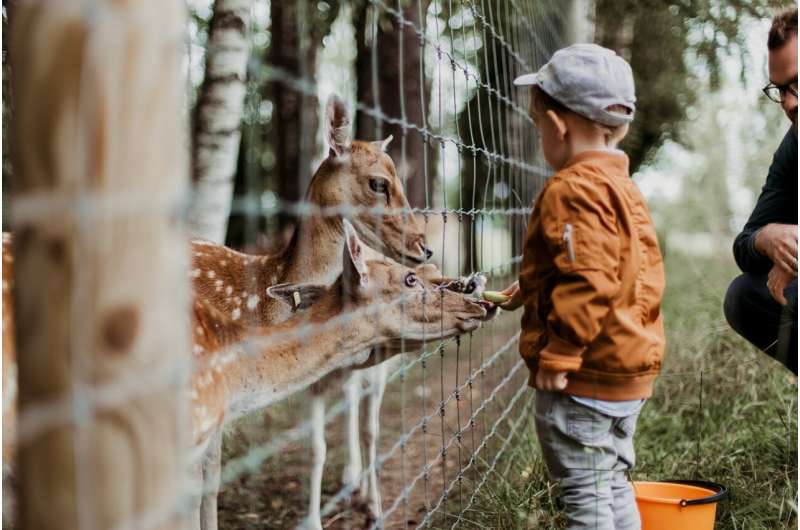Credit: Unsplash/CC0 Public Domain
Planning a trip to the zoo this weekend? Why is it that after a visit, a four-year-old might remember seeing a lion, a tiger, and a bear, while a 10-year-old might also recall seeing a giraffe, a kangaroo, a pygmy hippo, a Komodo dragon, a ring-tailed lemur, and maybe even a West African dwarf crocodile? New research from York University shows that while older kids have a superior memory, children as young as four show evidence of the sophisticated technique known as "temporal clustering," when recalling information.
"We often underestimate what children are capable of," says York Psychology Professor Thanujeni Pathman from the Faculty of Health and Director of York's Memory Development Learning and Brain Lab. "Our study—looking at kids not in a research lab, but out 'in the wild'—shows these universal memory properties are established at a very early age."
The study's authors, who also included York Ph.D. students Lina Deker and Mark Christopher Adkins, and York undergraduate student Puneet Kaur Parmar, looked at children who took part in a week-long summer camp at the Toronto Zoo—a deliberate choice for Pathman, who has previously conducted research at various science centers and museums. "When we can get out into the world and capture real-life events to answer our research question, it helps to bolster what we're finding and make it more ecologically valid," Pathman explains.
The children were on set schedules for visiting different exhibits, so the researchers knew which animals the kids saw when. The kids were divided into groups of four- to five-year-olds (defined as being in early childhood), six- to seven-year-olds (middle childhood) and eight- to 10-year-olds (late childhood). At the end of the week, the children were asked one simple question: "can you tell me all the animals you saw this week?"
"We were interested in how many animals children of different ages recalled. We found the expected pattern that older children recalled more animals than younger children. But we were especially interested in the order of their recall. Were children showing temporal clustering? And we found that they were."
Temporal clustering—the idea that people remember things in groupings based on the timing of those experiences—is a well-documented process in adults. Pathman and her team have discovered that children as young as four search for memories using this same process.
"If a child's recall response was 'ostrich, gorilla,' those would be animals that they saw in different spatial and temporal contexts. That is not an example of temporal clustering. But if the child said 'ostrich, zebra'—these animals were experienced together, so the response would show temporal clustering."
Creating memories in space and time relies on a part of the brain called the hippocampus. Pathman says current research suggests this part of the brain continues to develop later into childhood than previously thought.
This study supports earlier findings by Pathman and others suggesting there is a jump in memory around age seven or eight and older kids do not display much difference in their memory processes compared to adults—especially when that memory is tested in a more naturalistic environment like a trip to the zoo, rather than a lab setting.
"I think a lot of attention has been paid to infancy, and the emergence of memory, but there's something that's happening in middle-to-late childhood that's really fascinating."
More information: Thanujeni Pathman et al, Children's memory "in the wild": examining the temporal organization of free recall from a week-long camp at a local zoo, Cognitive Research: Principles and Implications (2023). DOI: 10.1186/s41235-022-00452-z
Provided by York University
























